



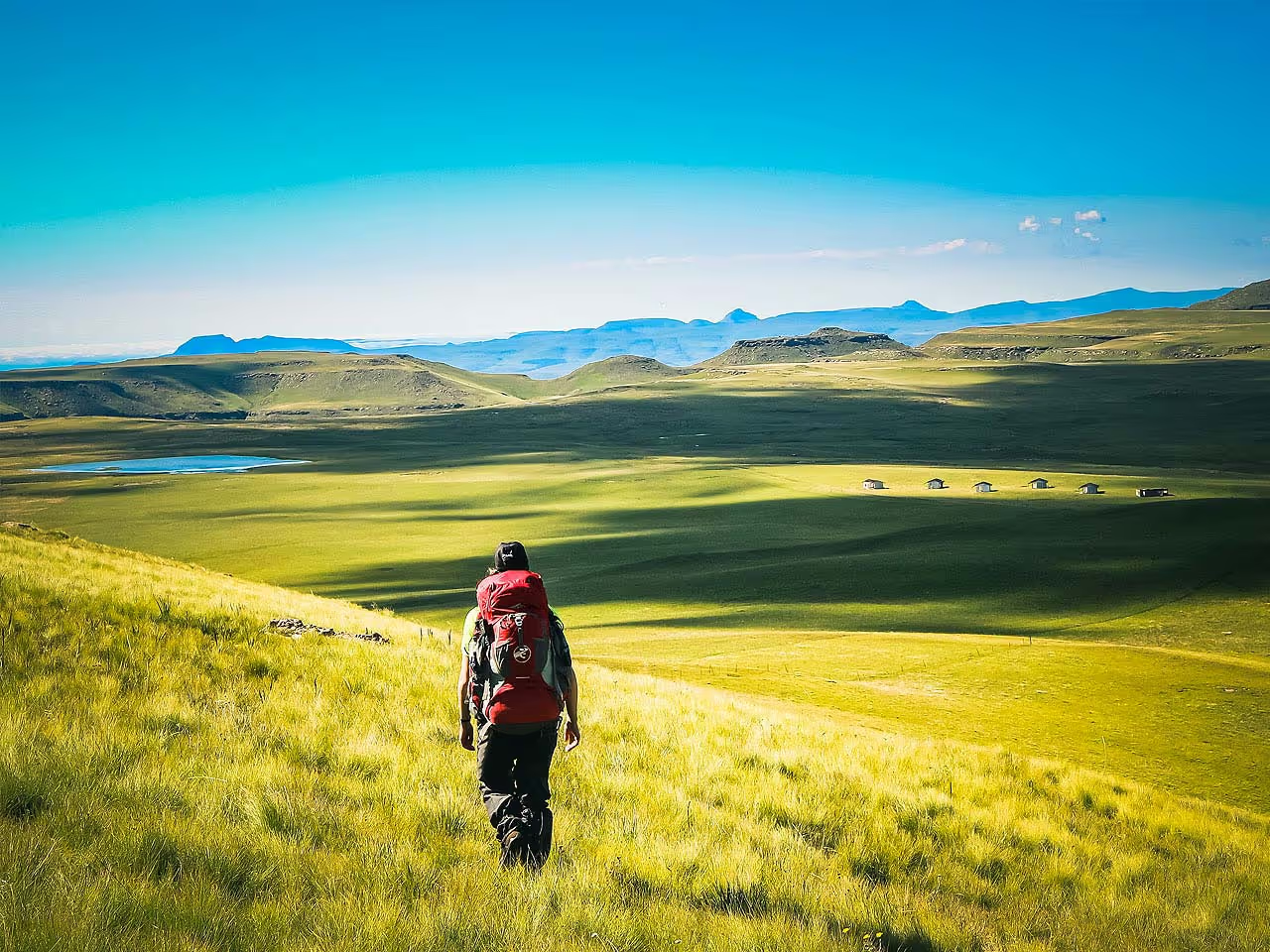
Despite our reservations on those rather subjective travel lists, we're not immune to award season hubris: a load of self-congratulatory poppycock until you get a nomination. Then they’re relevant, important and bang on the money. Lesotho debuts at #12. Way higher (no pun) than any other African country on that list. Way to go Lesotho. And well-deserved, too. Washington at #1? Seriously?
Of course we’ve known Lesotho to be a fantastically underrated African destination for a long time now. Yet Lesotho has long had a right to feel high and mighty. Nicknamed Kingdom of the Sky, the country's foothills begin at 1km above sea level and rise another few into the swirling clouds.
Rugged and beautiful, Lesotho was at the front of the queue when mountains were dolled out. Actually, this place has way more than its fair share. And those same mountains attract rain in such Herculean quantities that Lesotho's greatest export is drinking water - pumped in vast quantities to its giant, thirsty neighbour. Is there anything more valuable? Well, they have diamonds too and we all know those are forever. Sigh.
Lesotho the mountain kingdom. Green in summer, white in winter. A place so rugged colonial forces didn’t bother and thus bequeathing it a small independent nation surrounded by modern-day South Africa. But with fewer tourists. Up here there’s no big game, no dry savannah, no desert plain. Instead you feel like you're standing on the roof of the continent itself.
If you like walking, you'll love Lesotho. The trails are phenomenal and birders should note there are a lot of raptors. The capital too has expanded over the past twenty years. Now in Maseru you'll find convivial restaurants, shops and craft markets - a modest selection but a selection nevertheless. And in 2020, Maseru is opening a new National Museum and Art Gallery - in a three-story building shaped like a spiral aloe, the national flower.
So, this small, landlocked country - surrounded entirely by South Africa - is suddenly the place to be. We like to think if Lesotho could make a speech it would go a little like this, “I’d like to thank the Academy, I mean the Drakensberg Mountains for your majesty; Sani Pass for your insanity; The Katse Dam for your water; T’sehlanyane National Park; The Sehlabathebe National Park; Maletsunyane Falls and Namibia Tours & Safaris, I love you guys!” So, come on, let’s explore this marvellous new discovery.

The Drakensberg, southern Africa's spinal column, runs along the northern and eastern borders of Lesotho. Here you will find the highest peaks in Southern Africa. In fact, so far-reaching is Lesotho that it’s average elevation makes it the highest country in the world.
Lesotho is home to the Basotho people. Famous for their traditional hats and blankets. It’s also home to their sturdy Basotho ponies. These guys really know how to stay the course on a near-vertical mountain trail. You can go trekking with them too. To try out our theory. Seriously though, it’s not for the inexperienced or fainthearted. The Basotho people have a rich culture despite living in, often, extremely isolated villages in handmade rondavel homes. Here it’s all untamed panoramas, rocky crags, deep valleys and fields of alpine flowers. You’ll also see that Jurassic-looking cactus, the spiral aloe, which grows in strange swirls on the high hillsides.
Maize is the staple food - they even use a corncob as a motif on their blankets. Which they wear so often they’re nicknamed ‘the blanket people’. Made from wool, they keep the wind and rain out. Plus they’re cosy, which is what you need for life at high altitude. They’re colourful, pretty, suave and pin-striped. Stripes for growth; corncob for wealth and, ahem, fertility.
Oh, and remember the museum we mentioned in the intro? It will feature exhibits on Basotho culture, their handicrafts and their traditions so you can find out more. It will also have the nation’s first-ever digitised archives.

The only road crossing the summit of the Drakensburg is the legendary Sani Pass. Arghhhhhhh! Do not look down. This gravel road is the only road link between KwaZulu-Natal in South Africa and Lesotho. Originally a mule track, it is fair to say it’s still a heart thumping, buttock clenching experience. It was finished in the 1950s and is pretty much the same as it’s always been, if not worse. You definitely need a 4x4.
But this is still Basotho territory so it is workable. Just have your wits about you. The narrow dirt roads meander scarily close to the mountain edge. There are no railings and at many places it’s only wide enough for one car to pass. But it really is worth it. It’s stunning, picturesque and one of the remote places in the world. You’ll be just over 2,870 metres above sea level at the top. Think snow and frozen waterfalls in winter, and a blaze of flower blooms in summer. This is also where you’ll find the Sani Mountain Lodge, home to the highest pub in Africa. Wolf down a Durban curry and quash the local Maluti beer.
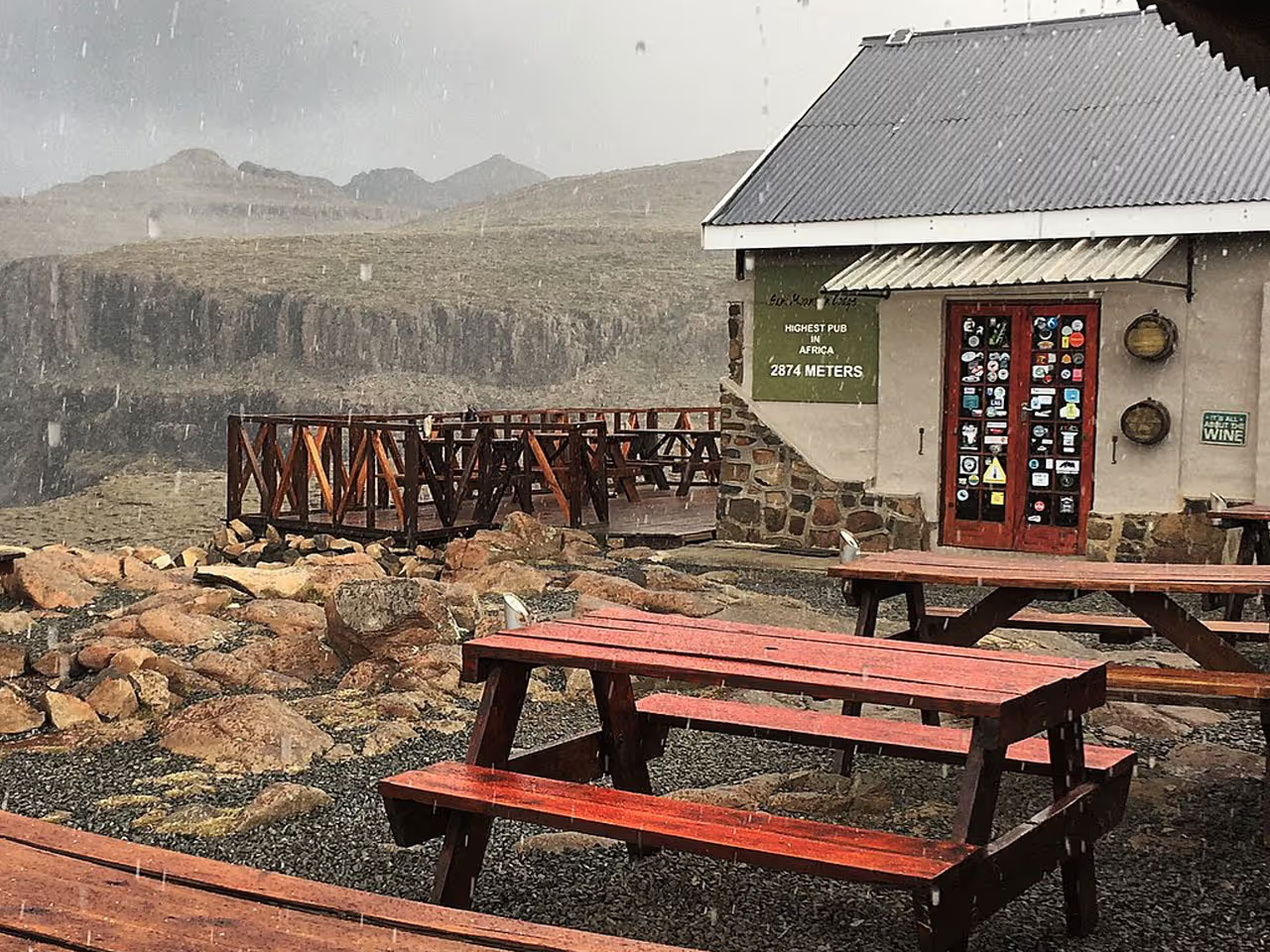
Oh, and by the way, this is where they hold one of the toughest off-road endurance events in the world. The Lesotho Sun Roof of Africa is an extreme motorbike and car challenge which began in 1967. Legend has it one of the workers who built the road said, “so, does anyone fancy racing over the worst road in the world?” Nuff said.
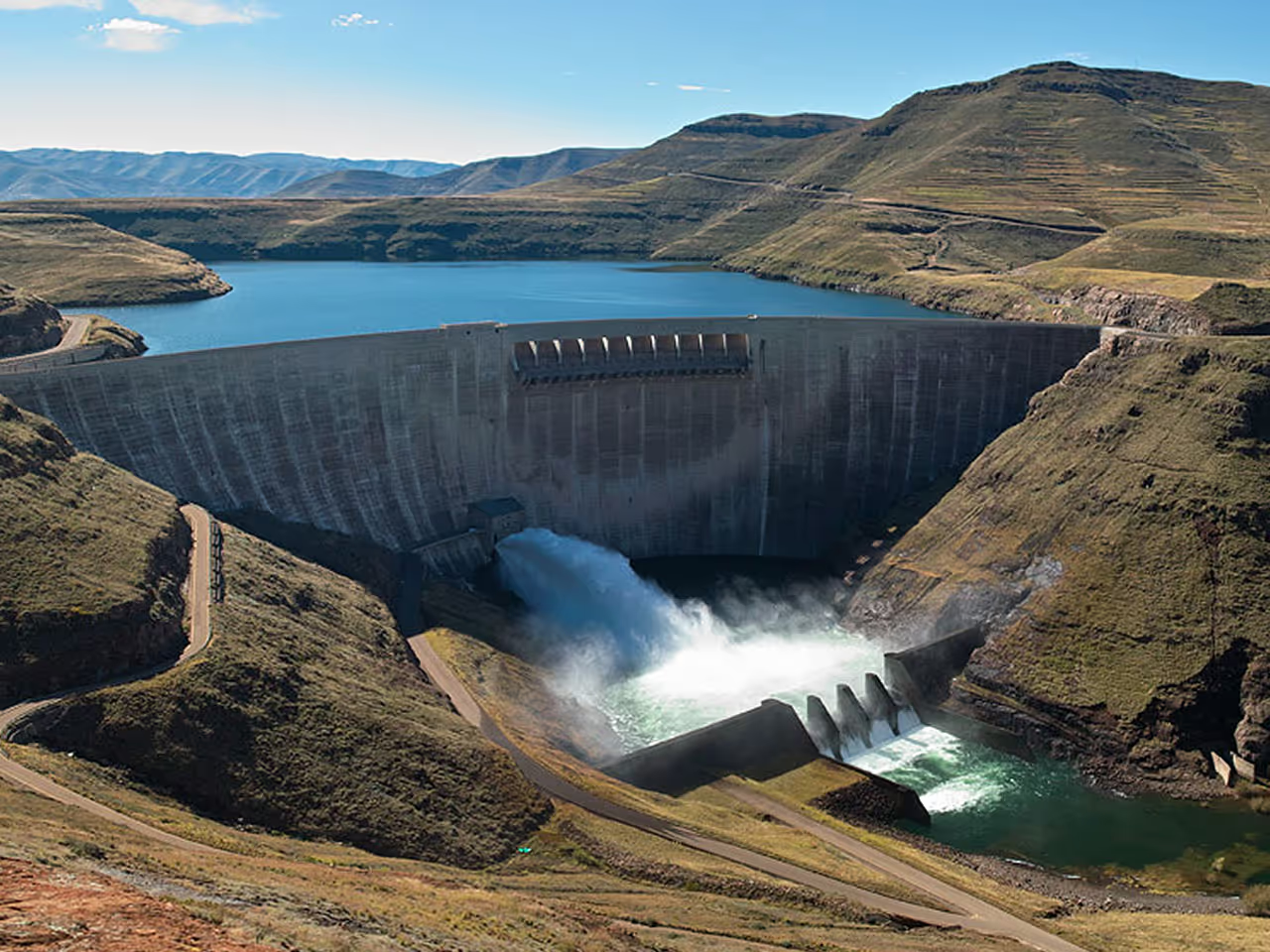
Katse is the tallest dam in Africa. And it really is a big guy. 186m or the equivalent of a 53 storey building, it’s an engineering and architectural marvel. It forms part of the Lesotho Highland Water Project which was born of South Africa's ever-growing need for water. Lesotho was drenched in the stuff.
Six huge dams were finished by the 1990s and suddenly Lesotho was rewarded with electricity. When it was built, it was one of the largest construction projects in the world, in one of the smallest and poorest countries in Africa. Today the Katse Dam is at an alarmingly low level due to the current regional drought. You can take a tour of the wall and actually go inside it too.
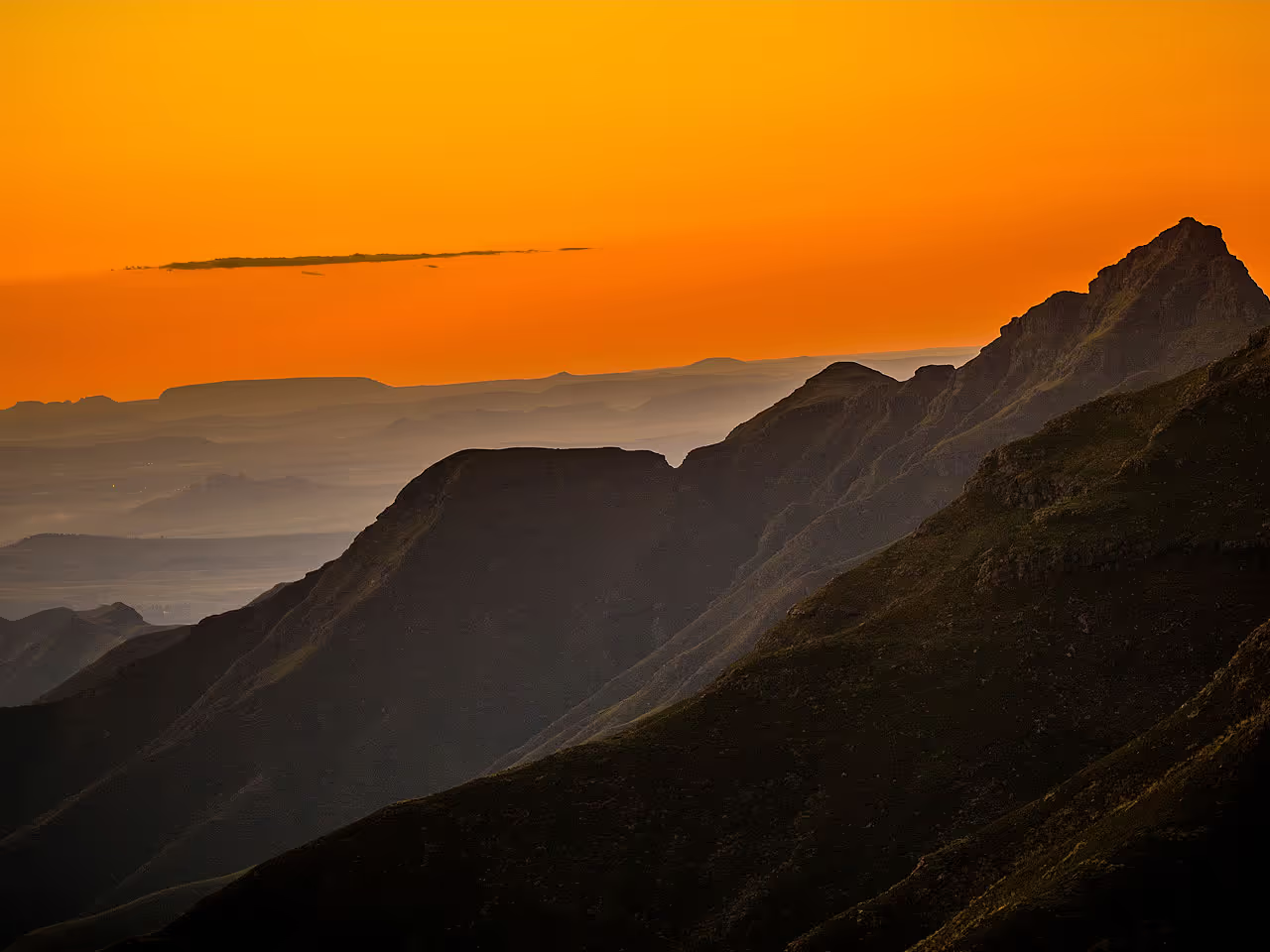
Switchback down from Sani Top and you’ll reach one of only two national parks in Lesotho, set below the uKhahlamba-Drakensberg escarpment.
Sehlabathebe means ‘Shield of the Plateau’ and is not only the country’s first ever national park (established in 1970) but it’s also one of the most isolated and dramatic anywhere in southern Africa. And it’s not just us saying that, UNESCO agrees - it’s considered part of Maloti-Drakensberg World Heritage Site. It’s also one of only two World Heritage Sites in sub-equatorial Africa to be classified as mixed. This means it’s recognised for both its cultural significance (because there’s a load of prehistoric rock art) as well as its diverse natural assets.
And what lovely assets they are. Not content with 65 sq km of rolling, boulder-studded grasslands, the park has 65 ancient rock art sites. The most accessible is signposted from the main road. Pictures of elands, people, rivers... it’s an early photobook. About 10km inside the main entrance gate you’ll also find huge rock arches, caves, dolmen-like outcrops and clear rock pools - all below the imposing trio of escarpment peaks known as the Devil’s Knuckles or Three Bushmen.
So, how do you get here? Well, if you use a back route from Sani Top it’ll take you around 8 hours. The route trundles along a surfaced road for a bit but then you’ll be roughing it as the roads deteriorate the closer you get to the gate. If you’re hiking you can follow a 40km, three-day footpath along the escarpment. You can also do this route on horseback accompanied by an experienced local guide.
Of course, once you’re in the park you can hike. Sehlabathebe is a haven for hikers but remember that the average altitude is 2,400 metres. You can also explore on horseback, and the trout fishing on the Tsoelikana River is legendary. There’s a waterfall here too, which flows over a low cliff into a chilly natural swimming pool.
It’s all very beautiful. There are a lot of wildflowers which bloom between November and February. And if you see a white and yellow delight this could be the Sehlabathebe waterlily - an endangered endemic which grows in the muddy base of shallow sandstone rock pools.
Animal-wise there’s the grey rhebok, which is a white-tailed antelope and eland, oribi, baboon, rock hyrax and black-back jackal. Birdlife is dominated by Cape vulture, jackal buzzard, Drakensberg rockjumper, yellow-breasted pipit and Drakensberg siskin. And the surrounding mountains are a breeding site for the rare bearded vulture. In fact, this is the only place in southern Africa where the Egyptian vulture has been recorded in recent years.
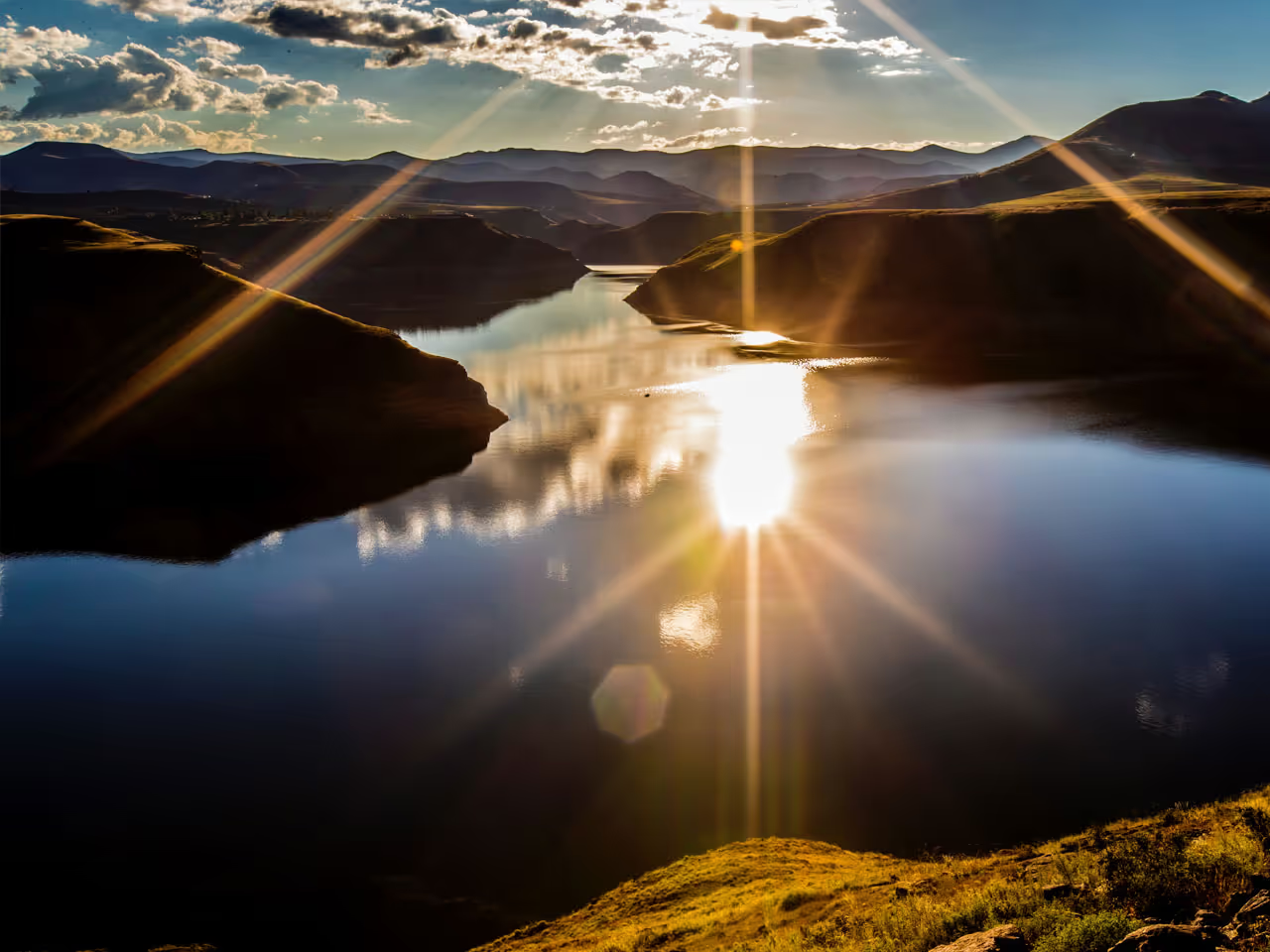
Deep in the Maluti Mountains you’ll find the second national park, Tsehlanyane. The astonishing array of plants here like the high life flourishing at 2-3,000m above the sea.
This sub-alpine chunk of beauty owes its origin to the Lesotho Highlands Water Project as it is right by the access road to the Hlotse tunnel. Boy, is this a utopia for botanists - big or budding.
The park is 5,500 hectares of extremely rugged mountain terrain which is home to one of the few remaining indigenous woodlands in Lesotho. Incredibly rare plants thrive here. ‘Tsehlanyane’ means berg bamboo and this park is the most important refuge for this plant in the entire Drakensberg-Maloti Mountain Range. It also has huge cultural significance to the Basotho people. Plus, some of the mountain fynbos growing here doesn’t exist anywhere else in the world. More than 220 plant species have been recorded.
Animals in Tsehlanyane National Park include the African wild cat, black backed jackal, porcupine, caracal, grey rhebuck, baboon, striped pole cat, rock hyrax, ice rat and the clawless otter. There is circumstantial evidence that leopard roam too.
It’s an underrated, under-visited park in the back and beyond. You can walk, hike and horse ride. Oh, and you never know, you might just find a diamond. The famous Letseng mine isn’t far away and regularly unearths treasures. The largest weighs more than a baseball and is the fifth largest in the world.
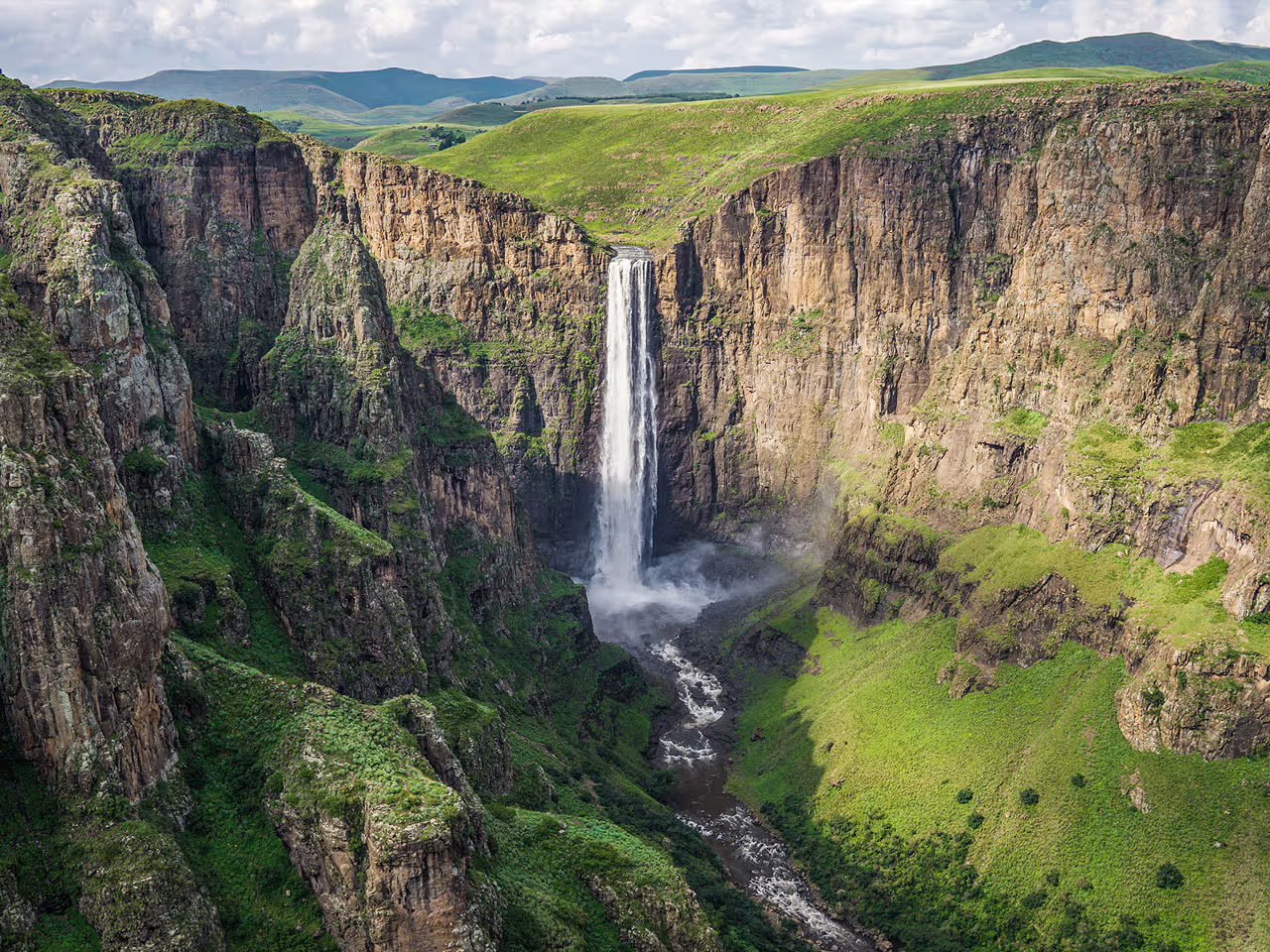
And, for an unexpected grand finale, how about this? Surely one of Africa's great wonders, Maletsunyane Falls. The drop is nearly twice that of Victoria Falls and yet here there are no buildings, no signs, no singing, no dancing. Just majesty and modesty.
The water falls from a ledge of Triassic-Jurassic basalt and knowing that just adds, well, atmosphere. It’s an eerie, otherworldly place. It’s also one of the highest single dropping waterfalls in the Southern Hemisphere, which is pretty impressive. Remember that when you go abseiling. Seriously. You can. This 192 metre waterfall is the site of the longest single-drop commercial abseil in the world. It actually holds a Guinness World Record. Which is rather smart.
Victoria Falls is known as the ‘smoke that thunders’ and the nearest town to Maletsunyane is known as the ‘place of smoke’. Semonkong is a busy town with sheep, donkeys, ponies and taxis all jostling for the centre lane. It’s the basecamp for the Maletsunyane Falls and one of very few places in Lesotho where you might encounter other visitors.
So there you have it. A scenic land of tall mountains and narrow valleys. A peaceful haven with pony trekking and too many blankets. You will leave with at least one. You have been warned.




"A dream come true"
We had the most amazing family holiday, everything worked so perfectly, the arrangements and accommodation was spectacular!
"Unforgettable trip to Namibia – Thank you Namibia Tours & Safaris!"
We are a group of four from Romania and spent 3 unforgettable weeks in Namibia. We can't recommend them enough, and for any future travels in Namibia or other parts of Africa, we will definitely use their services again.
"We had a great experience"
From the time we put the key in the ignition till we boarded the plane in Windhoek nothing went wrong.
"Unforgettable bird photography trip in Namibia"
It was a fantastic experience, everything was very well organised, went smooth and according to expectations. It was our first self drive in Africa and it was a great, unforgettable time.